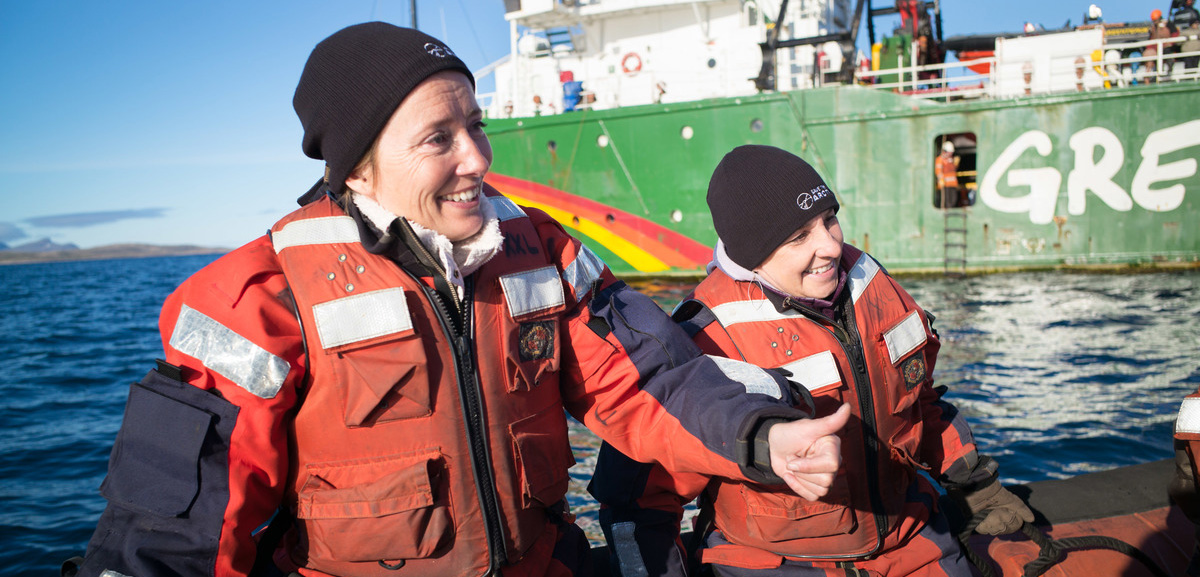An Act of Forgiveness Fuels a Fight in the Arctic
Greenpeace and movie stars mend fences with a Nunavut hamlet as it heads to the Canadian Supreme Court.
Article body copy
Jerry Natanine had a problem. It was July 2014, and Canada’s National Energy Board (NEB) had just announced its approval of a seismic surveying project in the waters east of Nunavut’s Baffin Island. Over five years, a ship hired by a consortium of Norwegian companies would be allowed to crisscross a swath of Baffin Bay and the Davis Strait in a precise grid, using a series of air guns to set off timed blasts in the water. Instruments onboard would measure the sound waves created by the blasts to map the geological features below the ocean floor. This practice is an early stage of oil and gas exploration. But there are concerns that it disrupts the habits and health of marine wildlife, particularly the whales and other creatures that rely on sound to navigate the ocean. Studies have shown that marine animals can sustain physical injuries and stress in the immediate blast areas. There’s also evidence that ocean wildlife will avoid areas where seismic surveying occurs, which worries Inuit hunters.
Natanine was the mayor of Clyde River, Nunavut: a small, predominantly Inuit community of roughly 1,000 people on the ragged, inlet-riddled east coast of Baffin Island. Clyde River sits on a wedge of treeless tundra, its modest cluster of buildings surrounded by the mountainous, glacier-covered moonscape of Baffin Island on one side and the icy ocean stretching toward Greenland on the other. It’s reachable only by ship during the short ice-free summer or by plane, on a flight with a four-digit price tag, and its store shelves are thinly stocked with some of the most expensive groceries on Earth: CAN $4 for a can of tuna, $10 for a jar of pasta sauce, $34 for a package of frozen chicken quesadillas. The community relies on the narwhals, seals, bowheads, and belugas that swim just offshore; they are a cultural resource for the community, and—most crucially—the animals are food. “The seal is our main staple,” Natanine says from his home in Clyde River. “We eat it every week—almost every day if we can.” He and many residents, along with Inuit from other Baffin Island communities, had objected to the proposed seismic surveying project from the beginning, fearing disaster for the marine mammals and the people who depended on them. But the NEB had not been swayed by their concerns.
Now Natanine wanted to appeal the NEB’s decision, but neither his small hamlet government nor the Nammautuq Hunters and Trappers Organization had the money to go to court. He needed an ally with deeper pockets—he’d tried a few friendly NGOs and Nunavut’s Inuit associations with no luck. He had 30 days to file an appeal.
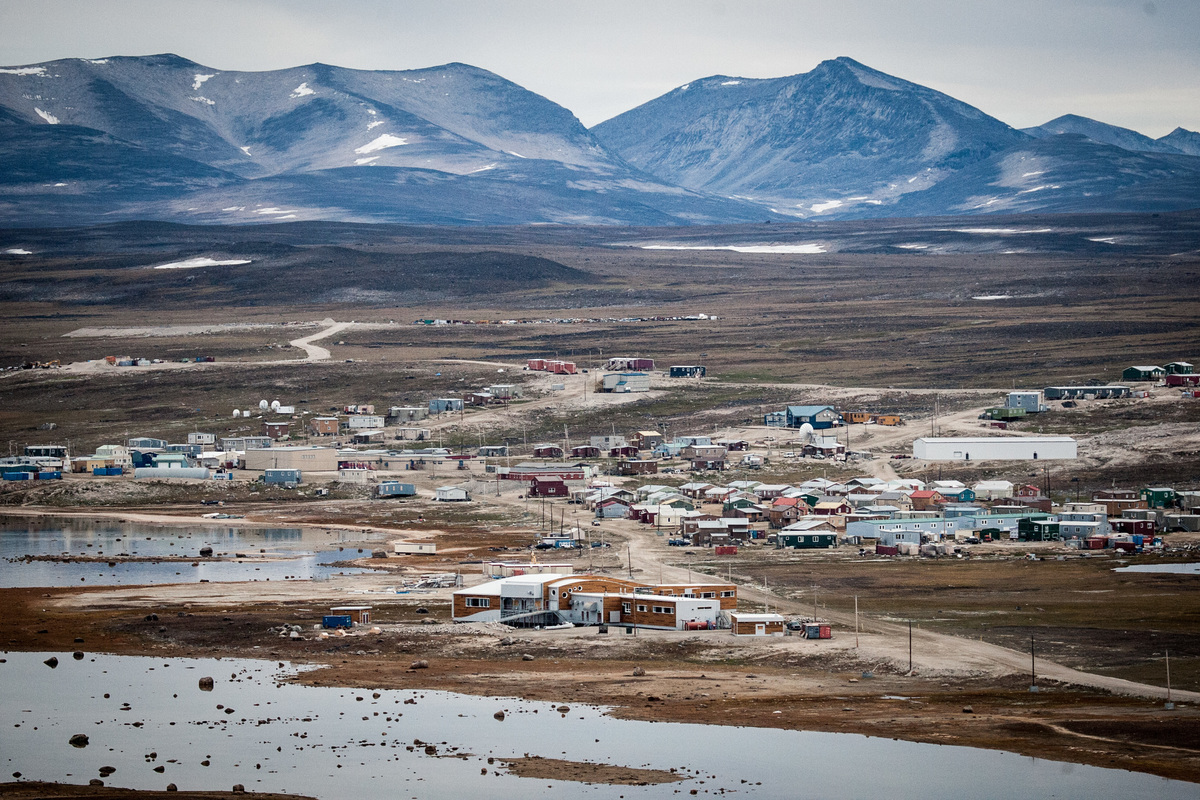
The Nunavut hamlet of Clyde River is home to roughly 1,000 people, and is reachable only by plane, or by ship during the short ice-free summer. Like all of Nunavut’s communities, it is dependent on diesel generators for power, and on satellites for phone and internet access. Hunting marine mammals for food is a way of life. Photo courtesy of Greenpeace
One day he sat looking at a days-old newspaper on his desk. The paper, Nunavut’s Nunatsiaq News, contained an apology from Greenpeace Canada for the organization’s campaigns against the commercial seal hunt in the 1970s and 1980s, and for the impact those campaigns had on the Inuit. The apology, written by Joanna Kerr, the new executive director of Greenpeace Canada, stated that the organization had “a deep desire to make amends with indigenous peoples for past mistakes,” including the anti-sealing campaigns, which further marginalized and economically disadvantaged Arctic communities.
“Like the corporations we campaign against,” she wrote, “we too must be open to change. Open to examining ourselves, our history, and the impact our campaigns have had, and to constantly reassess ourselves—not just by apologizing, but by humbly making amends and changing the way we work.” She cited Greenpeace’s ongoing campaign against Arctic oil development, and its consultation with indigenous groups from around the circumpolar region to shape that campaign, as proof that the group’s modus operandi had changed.
Greenpeace didn’t expect immediate results from Kerr’s letter. The organization’s lead Arctic campaigner, Farrah Khan, described their hopes this way: “If we put this out there, maybe five years down the road we might be able to make some connections with northern communities. We didn’t really know where it would take us.”
Natanine had seen the piece a few days earlier, but he hadn’t read it. “I hated them at the time,” he says. The success of the global anti-sealing campaigns had devastated his parents, effectively hollowing out the market for the pelts they sold. “That’s when we became poor.”
Now, though, he picked up the paper and read the apology—and was, unexpectedly, moved to tears. “I had a good cry,” he says, “and I said to myself that day, I’m just going to forget this. I’m going to forgive this organization.” He called a community meeting and proposed that the hamlet approach Greenpeace for help. “It was pretty emotional,” he says. In Nunavut, people like to say that the closest thing to a swear word in Inuktitut is “Greenpeace.” In the end, most people agreed with the mayor. Natanine wrote an email, and hit send. His timing was good: Greenpeace had just refocused its Arctic campaigning on the fight against oil and gas exploration. On July 22, Greenpeace issued a press release declaring its support for the community of Clyde River in its battle against seismic surveying. That support will be on display when the proceedings begin on November 30 in Canada’s Supreme Court, in Hamlet of Clyde River, et al. v. Petroleum Geo-Services Inc. (PGS), et al.
Whatever the outcome, one of the broadest impacts of Natanine’s act of forgiveness could be on relationships: between organizations, and the celebrity activists who support them, and communities caught in the crosshairs of activism. Because those who fight on behalf of natural spaces are beginning to recognize that people are a part of the environment, too.
The root of the hostility between Clyde River and Greenpeace can be traced back to Brigitte Bardot’s visit to Canada almost 40 years ago.
The French actress, a passionate animal rights activist, arrived in the small coastal town of Blanc-Sablon, on the border between Labrador and far northern Quebec, in early 1977. She was part of an early Greenpeace campaign—the fledgling organization was protesting Canada’s seal hunt. Other Greenpeace campaigners had been met with physical violence when they arrived in town; locals jeered and heckled Bardot at a news conference, and one sealer confronted her with the dripping, bloody carcass of a skinned seal.
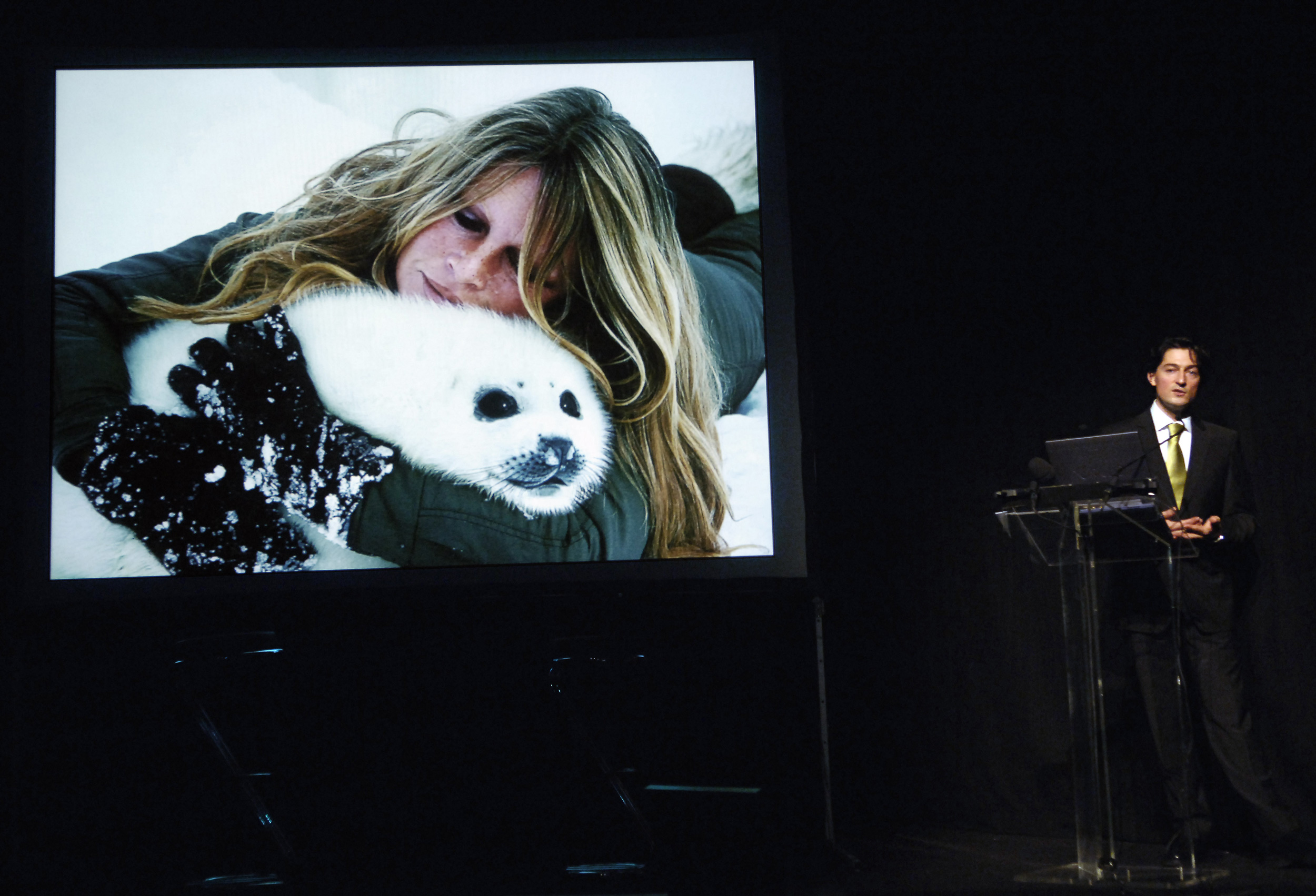
A representative of the Fondation Brigitte Bardot gives a speech in Paris. Projected in the background is one of the famous images of Bardot posing on the Labrador sea ice with a baby harp seal in 1977. Photo by Stephane De Sakutin/AFP/Getty Images
Bardot’s presence grabbed the media’s attention. She flew by helicopter to Labrador’s sea ice for a photo shoot that’s still famous today: lounging on the ice pack, staring intently into the camera, snuggling with a white-coated baby seal. It was an early example of the power of celebrity attached to a cause—what U2’s Bono once called “currency of a kind.”
Currency, however, fluctuates, and celebrity endorsements of causes are no different. Australian professor of cultural studies Graeme Turner calls celebrity activism a mixed blessing. The celebrity, he writes in a recent paper, is an ambiguous figure, just as effective at attracting derision as desire. Turner gives two examples of celebrity activists who produced a community backlash against their activism: an Australian athlete who protested a coal mining development in an economically depressed community, and basketball star Yao Ming’s campaign against shark fin soup in China. It’s not so uncommon these days for derision to override desire when locals, caught in the middle of an advocacy group’s campaign, view the stars as interlopers, wielding their fame to the community’s detriment.
Certainly, the people of Blanc-Sablon derided Bardot, and plenty of pro-sealing Canadians have made jokes about the stars that followed in the actress’s wake over the years, including Jude Law, Perez Hilton, Sir Paul McCartney, and Canadian actress Pamela Anderson, who has been one of the most consistent anti-sealing activists. In December 2013, Anderson traveled to St. John’s, Newfoundland, to offer the Canadian Sealers Association $1-million if they would agree to end their hunt. (They declined.)
But the anti-sealing campaigns have never been about convincing the local community to get on board, really: they are about swaying outsiders, and applying external economic and social pressure.
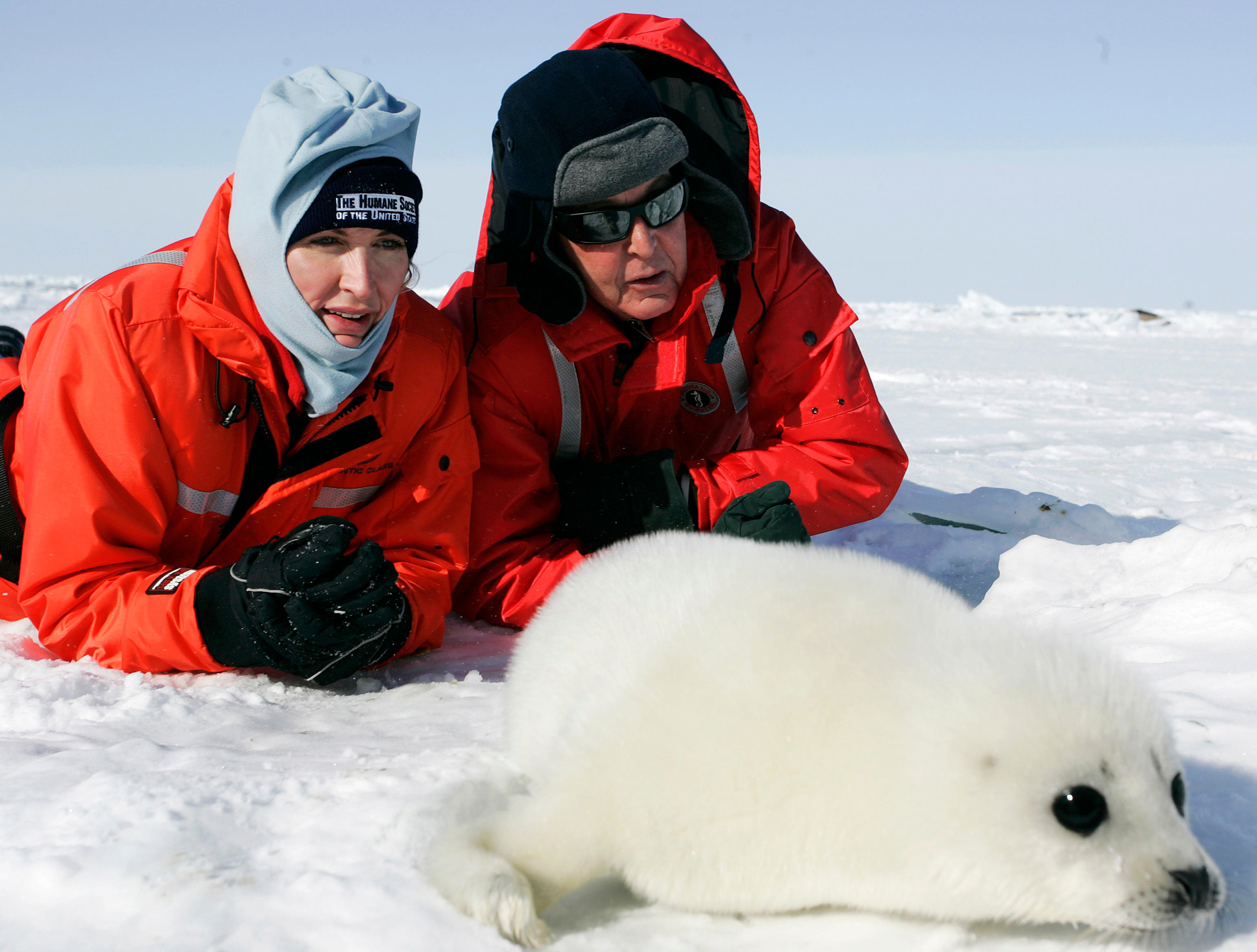
Sir Paul McCartney and his then-wife, Heather Mills, posed on an ice floe with a seal pup in March 2006. The photo shoot, intended to raise awareness of and protest Canada’s seal hunt, was in homage to Brigitte Bardot’s ice floe photos from 1977. (Canada banned the hunting of baby harp seals in 1987.) Photo by Reuters/Alamy Stock Photo
Though it hasn’t completely extinguished the practice, the global campaign against Canadian sealing has been a success for its proponents. In 1987, the Canadian government banned all hunting of “whitecoats”—the white-furred baby harp seals that Bardot clutched in her photos. Many nations have banned the importation of seal products for fur or meat, including the United States and the European Union. The value of seal pelts has plummeted, according to reports in the Toronto Star and other outlets: from 2006 to 2012, the per-pelt price dropped from $105 to $30, and the overall industry shrank from $46-million in 2006 to just $6-million in 2010. In 2014, Canada lost an appeal to the World Trade Organization to overturn the EU ban.
Activists have focused mainly on the large-scale commercial hunt off Newfoundland and Labrador, but their actions rippled to the remote communities of Canada’s high Arctic, closing off an economic opportunity while also demonizing a practice that is a bedrock of Inuit culture. As a result, many Inuit, including Natanine, blame environmentalists and animal rights groups for exacerbating the legacy of colonialism in their communities by cutting them off economically and isolating them culturally from the world at large. The result is a too-common cycle of violence, addiction, abuse, and suicide, made even worse by economic stagnation and the global vilification of their cultural traditions.
Clyde River’s bitterness is understandable: the photo of a glamorous Bardot with one cute seal pup changed Inuit lives for the worse. With Natanine’s gesture, accepting Greenpeace’s olive branch, the next celebrity visit to the Arctic promised something entirely different.
As the issue of seismic surveying heated up this past summer, Greenpeace invited British actress Emma Thompson to Clyde River. Thompson—who’s starred in everything from The Remains of the Day and Sense and Sensibility to Nanny McPhee and the Harry Potter movies—arrived in town to broadcast to the world that the battle the community faces is about social justice. By potentially endangering (or at the least, disrupting and diverting) the marine mammals, the oil and gas companies were also potentially endangering the people. In essence, the celebrity message was vastly different from the past: do not mess with this community’s economic, social, and food security.
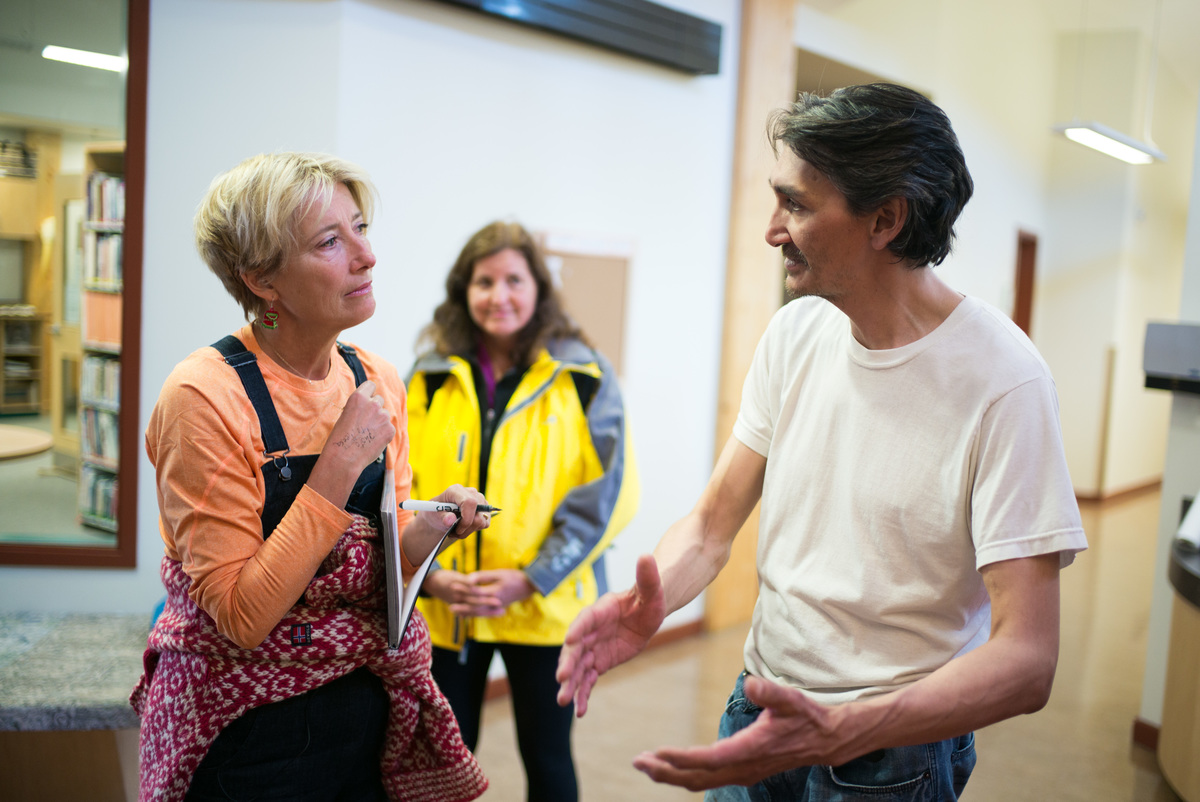
Emma Thompson visits the cultural center in Clyde River with Jerry Natanine. The actress and the former hamlet mayor have teamed up to fight seismic surveying in the waters east of Nunavut’s Baffin Island. Photo courtesy of Greenpeace
During her week in town, Thompson visited the grave of a young man who killed himself. She gasped at the extortionate food prices in the grocery store, learned to play a traditional game using seal flipper bones, and sat in on a lecture about the dangers of seismic surveying to marine wildlife. She met with elders and youth, attended a community feast, and spent time with Natanine, who’s no longer the mayor, but is still taking a leading role in the hamlet’s fight against offshore oil and gas exploration. In a diary of her visit, Thompson wrote admiringly of Natanine: “He would smell b.s. a mile off with his eyes shut and mothballs up his hooter.” Her diary, published by Time magazine, concluded with: “The Arctic isn’t just about ice. It’s about people.”
Thompson’s thoughts, writ large, closed the circle for Greenpeace, helping to heal the wounds opened by Bardot and the stars who followed her onto the ice. That matters, though it won’t, in itself, stop the seismic surveying project.
A lot has happened since a desperate Natanine sat at his desk and read the organization’s apology. In the summer of 2015, Clyde River lost its case in the Federal Court of Appeal, but earlier this year the Supreme Court of Canada agreed to hear their request to overturn the NEB’s decision. Their lawyer will argue that the NEB failed in its duty to sufficiently and meaningfully consult with the Inuit communities on Baffin Island before allowing the project to go ahead.
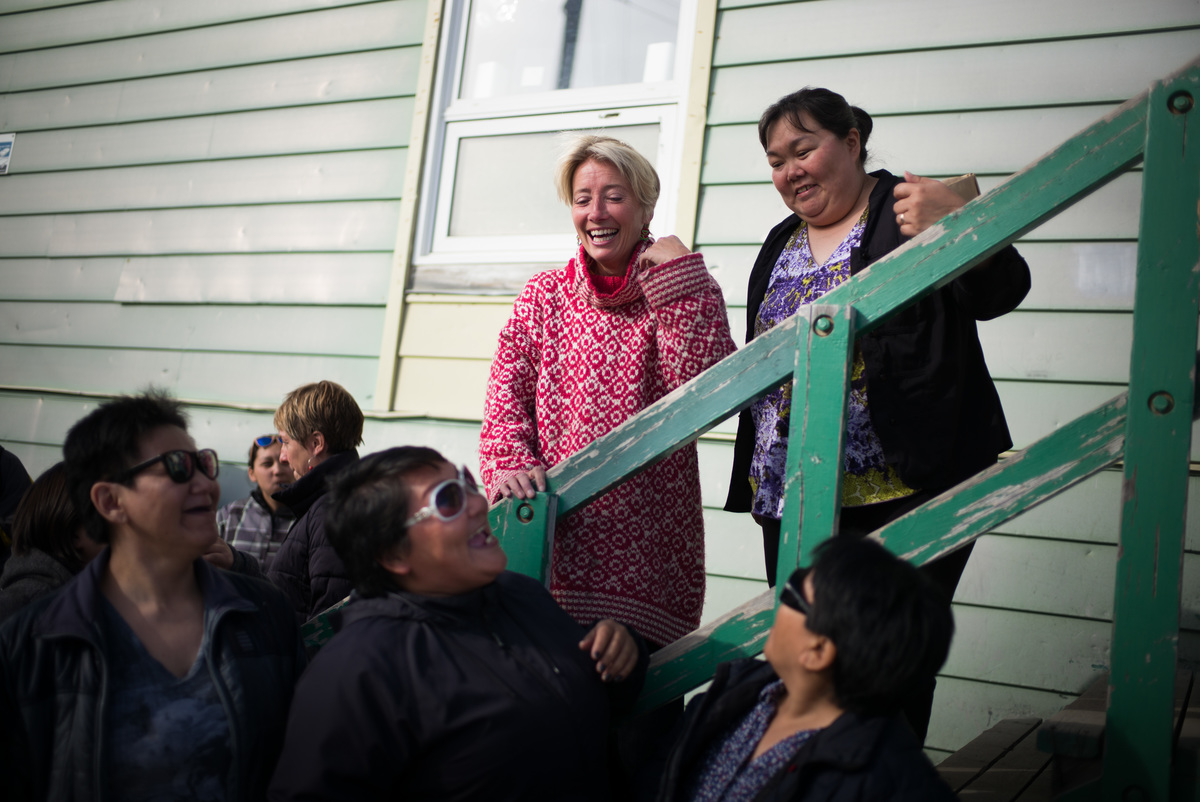
Celebrity activist Emma Thompson jokes with Clyde River residents on the steps of their community center this past summer. Thompson visited Clyde River with Greenpeace representatives, who delivered solar panels to the community and provided training in activism. Photo courtesy of Greenpeace
The duty to consult and accommodate aboriginal communities, in its modern form, is a recent concept in Canadian law. The court’s eventual decision could have implications well beyond Baffin Island; a judgment is expected to take several months. The Norwegian group behind the surveying project, which has voluntarily held off on testing while the case winds its way through the courts over the past two years, hasn’t promised to wait around again next summer.
But even if Clyde River loses, Natanine says the fight against seismic surveying will go on. The partnership with Greenpeace has brought more than just Thompson to town. Last summer, the organization conducted workshops for the hamlet residents on “direct action,” meaning hands-on attempts to stop the testing from occurring: boarding and occupying the testing ship itself, if need be. Says Natanine: “If we should lose, it’s not going to be the end.” His problem isn’t solved yet, but he isn’t fighting alone.

